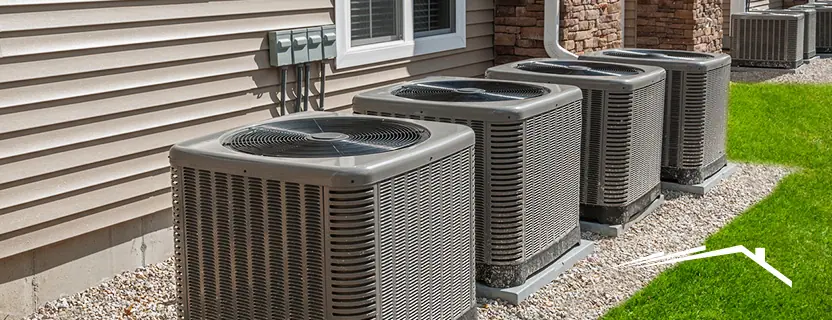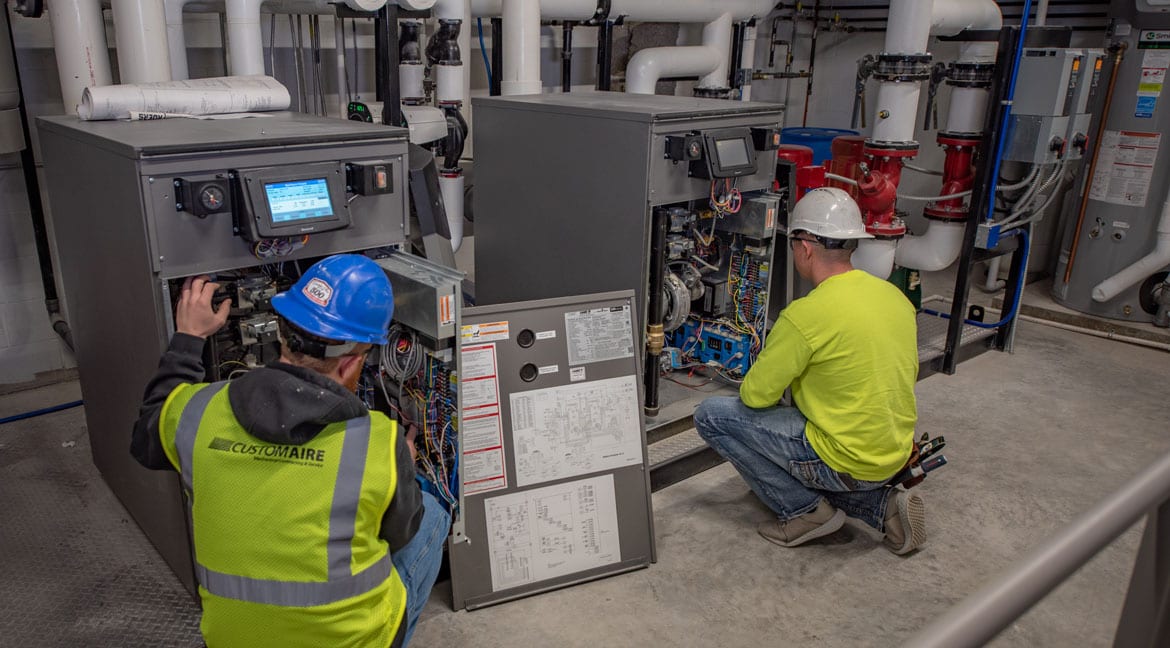Top Reasons to Schedule heat pump replacement ooltewah tn
Top Reasons to Schedule heat pump replacement ooltewah tn
Blog Article
Exactly How a Heatpump and Heater Collaborate to Maximize Your Home's Heating Effectiveness
Recognizing exactly how a heatpump and heater collaborate is vital for home owners seeking efficient home heating options. Each system has its staminas, offering a well balanced method to home comfort. The heatpump masters moderate temperature levels, while the heater delivers rapid warmth during extreme cold. This harmony not just lowers energy expenses yet likewise boosts the life-span of both appliances. What aspects influence this cooperation, and just how can house owners optimize their advantages?
Comprehending Warm Pumps: How They Work
Although many individuals may be not familiar with their internal functions, heatpump play a vital function in modern heater. These gadgets operate by transferring warmth from one place to an additional, using the concepts of thermodynamics. In chillier months, a heatpump extracts warm from the outdoors air, ground, or water, and transfers it inside your home to warm up the home. Alternatively, during warmer months, it can reverse the process, acting as an a/c unit by removing heat from inside to the outside.Heat pumps include an evaporator, growth, condenser, and compressor shutoff. The refrigerant within the system takes in warmth as it vaporizes at low temperatures and stress. The compressor after that increases the pressure and temperature level of the cooling agent, permitting it to release heat as it condenses. This effective procedure can significantly minimize power consumption compared to conventional heating techniques, making heatpump a lasting choice for climate control in homes.
The Role of Heating Systems in Home Home Heating
Heaters play an important function in home heating by giving a dependable source of warmth during the chillier months. They operate by producing warm with combustion or electrical resistance, distributing it throughout the home by means of air ducts or radiant systems. The efficiency of a heater is often measured by its Annual Fuel Utilization Efficiency (AFUE) rating, which shows how efficiently the unit converts gas right into heat.Furnaces can use various energy resources, consisting of natural gas, propane, electricity, or oil, allowing home owners to pick the most ideal option for their demands. Unlike heatpump, which may battle in severe cold, heaters preserve regular performance, ensuring that interior temperatures continue to be comfortable despite exterior problems. Additionally, modern-day heating systems frequently come outfitted with advanced modern technology, such as variable-speed blowers and wise thermostats, enhancing their effectiveness and responsiveness. This versatility makes heating systems an important element in all-encompassing home heating approaches.

Benefits of Making Use Of Both Solutions With Each Other
Combining the strengths of both heating systems and heatpump can cause an extra effective and reliable home heating remedy. Utilizing both systems permits homeowners to benefit from the heatpump's energy performance throughout milder temperature levels while relying upon the furnace for even more extreme cold conditions. This twin technique can considerably reduce energy expenses, as warm pumps consume less power than standard heating approaches when temperature levels are moderate.Additionally, making use of both systems with each other can boost comfort degrees in the home. Heatpump can give constant, also heating, while furnaces can quickly increase ambient temperatures when required. Additionally, the assimilation of both systems can expand the life expectancy of tools by reducing wear and tear on each system, as they share the work. Eventually, home owners can enjoy a balanced, economical home heating remedy that changes effortlessly to differing climate condition, guaranteeing a warm and inviting home throughout the winter season.
How Heat Pumps and Furnaces Complement Each Other
When property owners incorporate heat pumps and heating systems, they create a complementary furnace that maximizes effectiveness and convenience. Heat pumps run by transferring warm from the outside air or ground, making them very reliable in modest environments. They stand out during milder temperature levels, providing cost-efficient home heating. On the other hand, heating systems generate warmth via burning or electric resistance, providing strong, instant warmth throughout extreme cool conditions.The combination of these 2 systems permits dynamic adjustments based upon temperature changes. Throughout warmer months or milder winter season days, the heat pump can take the lead, saving power and decreasing prices. As temperatures decrease, the heater can effortlessly involve, guaranteeing regular heat throughout the home. This synergy not just optimizes energy usage yet also improves the life-span of both systems, as each unit operates within its excellent performance range. Together, they develop a well balanced environment that adapts to varying climate needs.
Maximizing Efficiency: Tips for Homeowners
Property owners can improve their home heating performance via several practical techniques. Establishing a routine upkeep timetable, incorporating smart thermostat technology, and executing efficient insulation and sealing remedies are vital actions. These measures not only enhance comfort but also decrease energy costs.
Regular Upkeep Set Up
To assure optimal heating effectiveness, establishing a normal maintenance schedule is necessary for any type of home. Property owners ought to focus on regular assessments of both heatpump and furnaces to determine peak performance. This includes transforming air filters each to three months, as clogged filters can greatly lower performance. Additionally, scheduling specialist maintenance at least yearly enables service technicians to determine and address possible problems prior to they intensify. Property owners should additionally clean up the heatpump's outside unit to protect against debris build-up that can prevent airflow. By sticking to a routine upkeep routine, home owners not only enhance their heating unit' efficiency however additionally prolong their lifespan, resulting in higher convenience and reduced energy expenses throughout the cooler months.
Smart Thermostat Combination
Integrating a wise thermostat right into a home furnace can greatly enhance energy efficiency, especially as it permits precise control over temperature settings. These this post tools can find out the home owner's timetable and choices, instantly readjusting the temperature level to enhance comfort while reducing energy usage. They can decrease home heating during times when the home is unoccupied, decreasing unnecessary intake. Several wise thermostats additionally supply real-time power usage data, making it possible for home owners to make educated decisions concerning their heating habits. In addition, remote gain access to via smart device apps permits customers to adjust setups from anywhere, ensuring the home is cozy upon return. Overall, clever thermostat assimilation not just enhances convenience but significantly contributes to energy financial savings and efficiency.
Insulation and Securing Solutions
Smart thermostats play an essential duty in energy efficiency, however their performance can be significantly boosted by correct insulation and securing services. House owners should prioritize shielding wall surfaces, attics, and floors to reduce warm loss. Top quality insulation materials, such as spray foam or fiberglass, can considerably boost thermal resistance. Additionally, sealing gaps around windows, doors, and ducts protects against cool air seepage and warmth retreat. Weatherstripping and caulking are effective methods for dealing with these leakages - ductless mini splits. Regular evaluations for air leaks, along with the use of blower door tests, can help identify trouble locations. By spending in insulation and securing, house owners can enhance the performance of their heating unit, ultimately resulting in decreased energy intake and reduced utility bills
Common Misconceptions Regarding Warm Pumps and Furnaces
What misunderstandings surround heat pumps and heaters? Several people incorrectly believe that warmth pumps are ineffective in colder environments. Actually, modern warmth pumps are made to operate efficiently also in low temperatures, providing reliable home heating throughout wintertime. An additional typical myth is that heating systems are constantly a lot more efficient than warmth pumps. This depends on the specific power sources and effectiveness ratings of the devices in question. Some may also believe that utilizing both systems at the same time is unneeded, however actually, this combination can maximize heating performance, particularly throughout severe climate condition. Additionally, people frequently presume that heatpump need consistent maintenance, when truthfully, they have similar upkeep requires to conventional furnace. By debunking these myths, home owners can make more educated choices concerning their heating choices, inevitably leading to enhanced comfort and power performance in their homes.
Maintenance Considerations for Combined Solutions

Frequently Asked Questions
Can Warm Pumps Job Efficiently in Incredibly Cold Climates?
Warmth pumps can struggle in very cool climates because of minimized performance and heat extraction restrictions. Advancements in technology have led to designs created for better performance in such conditions, improving their stability in rough settings.
The Length Of Time Do Heat Pumps and Furnaces Generally Last?
Warm pumps normally last 15 to twenty years, while heating systems have a life-span of 15 to thirty years. Routine maintenance can prolong their longevity, guaranteeing effective operation and reducing the need my company for early substitutes.

What Is the Typical Price of Setting Up Both Equipments?
The typical price of installing both a warmth pump and a furnace commonly ranges in between $5,000 to $10,000 - heat pump service. Variables affecting this cost include system dimension, installation intricacy, and regional labor rates
Exist Tax Motivations for Making Use Of Energy-Efficient Heating Systems?
Lots of home owners ask about tax rewards for energy-efficient heating unit. Various federal and state programs usually use refunds or credit scores, urging the fostering of lasting technologies to decrease energy usage and advertise ecological duty.
Just how Do I Choose the Right Size Heat Pump and Furnace?
Selecting the ideal dimension heatpump and heater entails computing the home's square footage, considering insulation quality, and assessing regional climate. Consulting an expert can ensure suitable system efficiency and power effectiveness based upon particular requirements. ductless mini splits. Understanding how a heat pump and furnace work together is important for property owners seeking efficient home heating remedies. In chillier months, a warm pump extracts warmth from the outdoors air, ground, or water, and transfers it inside your home to warm the living space. When home owners incorporate warm pumps and furnaces, they create a corresponding home heating system that maximizes performance and convenience. Heat pumps run by transferring warm from the outdoors air or ground, making them very effective in moderate environments. Warm pumps can struggle in exceptionally chilly climates due to lowered effectiveness and heat removal restrictions
Report this page